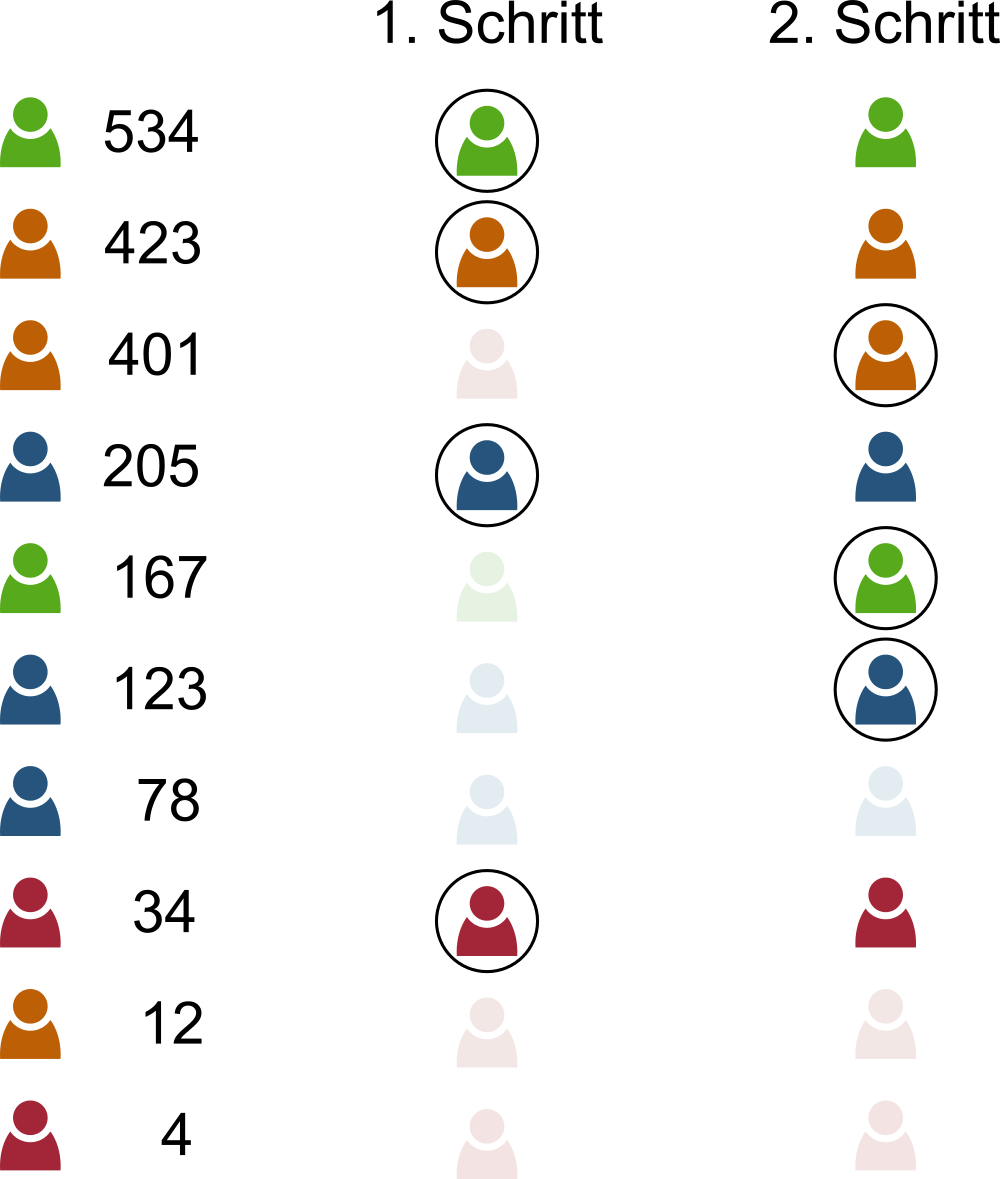Elections
In June 2025, online elections will be held at the university. Students, academic employees and doctoral students are allowed to vote for their candidates in the senate and the faculty councils. The doctoral students can additionally vote for the members of the board (ProKo). Seven board members and their successors will be elected. The term starts on October 1st, 2025 and ends on September 30th, 2026.
Election period: 17.-30. June 2025
Deadline to hand in the Form of Candidacy: 23. May 2025 at 3 pm
Offizielle Wahlbekanntmachung (official announcement of the elections in German)
Form of Candidacy (Formular für die Kandidatur)
Electoral committee: Alicia Pirwass and Ida Holm
If you need help with information only given in German or regarding election regularities, just contact us.
Election principles
- A majority vote takes place without ties to the proposed applicants (Mehrheitswahl ohne Bindung an die vorgeschlagenen Bewerberinnen und Bewerber).
- All doctoral students accepted on the day of the election are entitled to vote actively and passively.
- The confirmation for acceptance as a doctoral candidate is particularly suitable as proof of entitlement to vote, which must be submitted on request when exercising the right to vote.
- Each voter has seven votes, with each eligible person having a maximum of one vote.
Formalities and content of a candidacy
A form for candidacy to the Proko board is available for candidates (see above). If you want to run for the senate or the faculty councils, please visite the website of the electoral committee of the university (link above). The signed form has to reach the electoral committee by the set deadline in order to be considered on the ballots.
Election of the Proko board
The Proko board consists of seven people. This ensures that each faculty is represented by at least one person - provided that at least one person from this faculty has received at least two votes. Each person has 7 votes, each person can be given 1 vote.
Other people can be written onto the ballot, the person must be clearly identifiable and be accepted as a doctoral student at Ulm University. The votes do not have to go to people who belong to the same faculty.
Distribution of seats
The following example is intended to explain how the mandates are distributed after the counting.
- The election results are shown on the right. The colors represent the faculty affiliation of the persons standing for election, next to them are the number of votes that each person received.
- In a first step, the candidates from each faculty with the most votes are selected. These people are set for the board. If no person was elected for a faculty, this seat will not be filled in this step.
- In a second step, the remaining seats are filled according to the number of votes until the seven members of the board are determined. The faculty affiliation does not play a role in this step.
Successors
If a person does not accept the election or resigns, the person with the most votes is the successor, regardless of the faculty affiliation. Exception: the person leaving was the only representative of a faculty - in this case the next candidate from the same faculty succeeds.

